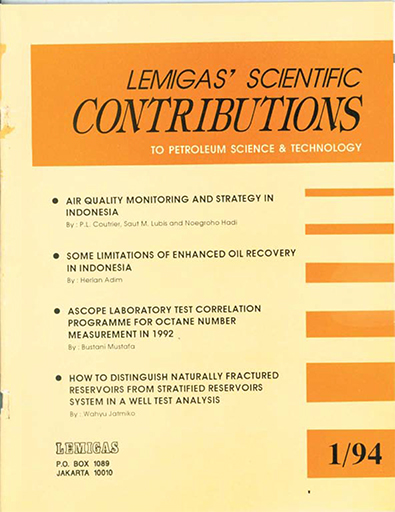ASCOPE LABORATORY TEST CORRELATION PROGRAMME FOR OCTANE NUMBER MEASUREMENT IN 1992
DOI:
https://doi.org/10.29017/SCOG.17.1.1106Keywords:
Laboratory, Correlation Programme, MeasurementAbstract
The ASCOPE Correlation Programme for octane number measurement obtains precision octane number data for gasoline using the CFR engine and the normally used method: ASTM 2699 and IP 237. The test results of the various participating laboratories are subjected to statistical analysis to determine average values, variance, standard deviation and to reject the outliers values. The Grubbs T-test is used for the statistical rejection of outliers. This method is used by both NEG and ASCOPE in their laboratory test correlation programme. The Grubb T-test appears to be quite satisfactory for ASCOPE purposes. The implementation of the Grubbs T-test assures inter-laboratory consistency and this in turn will give the buyer or seller of the gasoline confidence in the quality of the fuel.
References
ASTM, 1980, “Test Methods for Rating Motor, Diesel, Aviation Fuelsâ€, Annual Book of ASTM Standard, Part 47, ASTM Standard, Part 47, ASTM, Pheladelphia, USA
Jasjfi E., 1991, “Comparative Study on Procedures for Rejection of Outliers in ASCOPE Laboratory Test Correlation Programmeâ€, Scientific Contribution, LEMIGAS, Jakarta
Ethyl Corporation Technical Services Laboratories, U.S.A., 1974, Precision and statistic, by Ethyl Corporation Technical Services Laboratories, U.S.A., Juni.
Downloads
Issue
Section
License
Copyright (c) 1970 SCIENTIFIC CONTRIBUTIONS OIL AND GAS (SCOG)

This work is licensed under a Creative Commons Attribution 4.0 International License.
Authors are free to Share — copy and redistribute the material in any medium or format for any purpose, even commercially Adapt — remix, transform, and build upon the material for any purpose, even commercially.
The licensor cannot revoke these freedoms as long as you follow the license terms, under the following terms Attribution — You must give appropriate credit , provide a link to the license, and indicate if changes were made . You may do so in any reasonable manner, but not in any way that suggests the licensor endorses you or your use.
No additional restrictions — You may not apply legal terms or technological measures that legally restrict others from doing anything the license permits.














